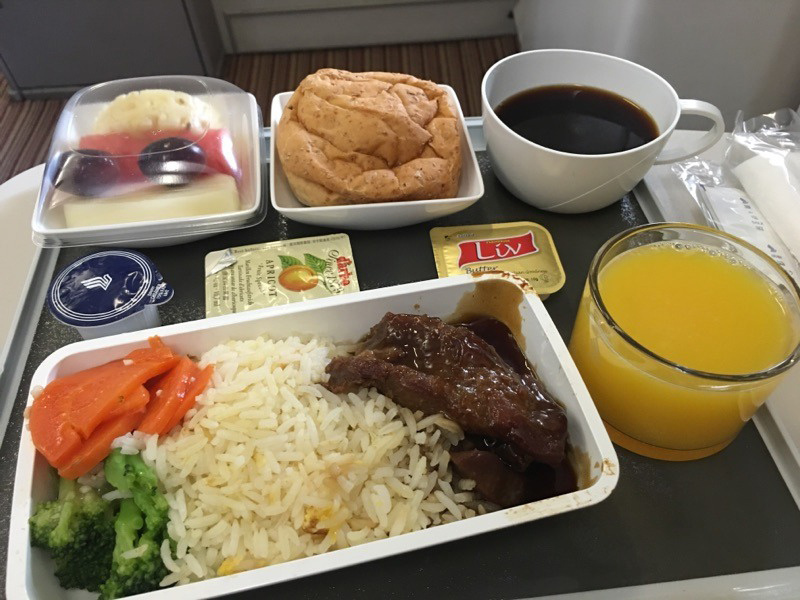


Have you ever sat on a flight and just be amazed by your food? The flight anxiety can be crippling but a well-performed food service can sometimes alleviate the discomfort—especially when you’re scared of flying.
When you’re 35,000 feet above the ground, not only can in-flight meals help you get over the discomfort. It can also fill in your stomachs and satisfy your taste buds big time. They are also believed to be the safest meals you can ever get. This is simply because preparing in-flight meals requires a lot of serious work. Ever wondered how your meals are made during flights?
Food preparation is no joke
Planning and preparation are very meticulous processes. The rule of thumb is to prepare food 10 hours before it gets eaten. A chicken is cooked 60% of the way while a steak is 30% to done.
Once preparation is done, the food will be stored in strictly-controlled conditions to sustain its quality and freshness. It will then be delivered to the aircraft and directed to its catering unit within two hours of departure.
This only means that the food is made within the same day of the flight. Though it’s likely to be much fresher than previously imagined, the food can sometimes lack in flavor despite being cooked recently.
Cooking while flying is a challenge
The cooking and serving process can be tricky up in the air. This simply means that the prepared and delivered meals have to withstand all the cooking, cooling, and reheating without losing its designed taste and goal to be fit for human consumption. For this to be achieved, it’s no secret that a lot of time and money is required.
Since planes don’t have microwaves in flight, a meal should make its way to a convection oven for about 20 minutes.
There’s science behind every taste of food
When you’re flying at high altitude, your sense of smell and taste can get altered. This is why food tasting is often done in-flight.
It’s because of the cabin pressure that affects your palate. The lack of humidity dries up the nose and the change in pressure numbs down one-third of your taste buds during take off. This is why your usual chili-hot meal will be tasting bland at high altitude, instead of its supposedly fiery taste when you’re on the ground.
This seems weird but your ears can seem like they have a sense of taste during flight. Recent studies have proved that “people eating to the backdrop of constant loud noise find food to be less sweet and less salty.” This is because the sound of the flight engine affects your perception of taste, in which loud and constant noise has the ability to deaden the sense of your tongue.
The little touches matter
Top-service airlines perform food service remarkably by getting into details. The little touches also mean the necessities during meals like what real humans on the ground usually need.
This may include full-sized salt and pepper shakers, proper crockery, real cutlery, and hot towels. However, following the September 11 attacks, many airlines have removed the real cutlery and returned to metal cutlery instead.
For some airlines, especially in economy, meals are served with plastic cutlery, sachets of condiments, a paper napkin, or sometimes a wet wipe.
Safety standards for safe meal
In-flight meals safety procedure includes having them wait in their own kind of “flight-specific gate lounge” where their condition is refrigerated. Therefore, if a flight gets delayed and the foods have already been loaded in the plane, part of the procedure is often to dump the entire load of it then order a replacement shipment.
Sure, it seems costly and kind of wasteful—but complying with this rule also means saving people’s lives from possible food poisoning. Just like what happened to the passengers of Aerolineas Argentinas flight from Buenos Aires to LA in 1992 where 76 people got sick and one person died due to cholera-infested shrimps.
All of these in-flight meal preparations wouldn’t be attainable without the service of flight catering and the airline attendants.
Those trays you receive while sitting at a 4-hour flight didn’t just make their own way from the kitchen and served itself to you. There’s science behind the preparation of these meals and every specification is needed to be done, no matter how costly and wasteful it can get.
That’s why Tourism and Hospitality and Restaurant Management are essential in creating an exceptional travel experience. Those that take up these courses can go through with being flight attendants and cabin crew members who are in charge of preparing these meals for the passengers. This kind of training can also lead to other careers outside of the airline industry, making it a versatile and flexible course, as well.
Enable yourself to achieve milestones in the tourism and management industry. Equip yourself with the skills and knowledge required for world-class airline operations with the help of WCC Aeronautical College.
The information contained in this website is for general information purposes only.
While WCC Aviation Company endeavors to keep the information up to date and correct, we make no representations or warranties of any kind, express or implied, about the completeness, accuracy, reliability, suitability or availability with respect to information published in this website.
Click here to read the Privacy Statement in full